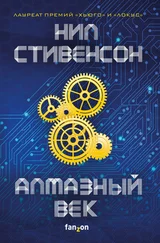A big meandering river like the Brazos could be a troublesome thing to approach in a wheeled vehicle. The road network petered out as it got closer. You were always having to take the long way round so that you could find a bridge. Having crossed over, you’d inevitably find yourself wishing you were back on the other side. He needed a boat and he had never been a boat kind of man. He ended up forming a loose partnership with one Beau Boskey, a fellow from Louisiana who was to alligators what Rufus was to hogs. Beau was as boaty a man as you could ever hope to find. Rufus had met him at a conference on invasive species management. When Rufus needed boat-related help he would try to reach Beau on his cell phone, and when Beau thought Rufus might help him out with his drones and his infrared gear, he would do likewise.
It was this that brought them together in Waco during the Summer of the Great Relay Shortage.
The three factors that entered into it were pigs, gators, and fire ants. In the winter and spring, East Texas had seen an unusual pattern of weather (if anything could be considered unusual nowadays) that, to make a long story short, had apparently been perfect for fire ants. In all honesty, conditions always seemed perfect for fire ants, but, according to people like Dr. Rutledge who really knew their stuff, this was the best ant year ever.
The water had then got higher. Not in a single convulsive flood that would have drowned the ants in their burrows, but a little at a time. The ants had edged toward higher ground, which was where people tended to build houses. Houston was the third-largest city in North America. So the result was what Dr. Rutledge dryly called human/ant encounters on a scale never before seen, with thousands of emergency room visits not just from ant bites but collateral damage such as Texans setting fire to themselves when trying to burn ant nests with gasoline.
Fire ants answered to weird signals that humans could only guess at. One of them, apparently, was that they were drawn to the smell of ozone. Ozone could be produced in a lot of different ways, but a very common one in that area was relays in air-conditioning units. A relay was a big electrical switch with mechanical parts that actually moved—the thing that made an audible click when it came on. Most everything else now had gone to solid state, but for some reason known only to electrical engineers, relays on air-conditioning units had to have actual pieces of metal that came together to establish contact, or pulled apart to turn it off. Whenever that happened, there was a little spark that produced ozone. In this part of the world it was typical for air-conditioning units to be installed on concrete pads external to the house. Ozone-seeking ants could easily get in through the ventilation slots and seek out the relays. There, the fate that awaited them was to be electrocuted or mechanically smashed the next time the relay cycled. Remains of dead ants built up on the contacts and fouled them to the point where the relay had to be replaced. The supply chain for these relays extended back to China where one company had come to dominate the market. It could not produce and ship them at anything like the pace needed to replace the units being destroyed by fire ants in East Texas. People came up with various jury-rigged workarounds but the upshot was that over a short span of time the places where hundreds of thousands of people lived became uninhabitable. Some folks could tough out a Houston summer with window fans, but most looked for alternatives. Just for starters this meant filling every hotel room in greater Houston. RVs—already at a premium because of COVID-19, COVID-23, and COVID-27, and the general inability of Americans to travel outside of the Lower 48—spiked in price as people snapped those up and parked them in their driveways. People went full nomad and began to occupy every legal campsite they could find, and when those were full they began to park illegally. The thing was that these people had resources. They all owned houses, after all. So they were affluent nomads.
For Rufus, that was all just background noise, explaining why it was suddenly difficult to find a place to park his rig or to buy replacement parts for his generator. Overwhelmingly more important was the call he received from Dr. Rutledge in the middle of July.
Over time, indigestible stuff accumulated in a hog’s stomach. Eventually they would vomit it up to make room. Anyone who tracked wild pigs would encounter spews from time to time: a patch of glazed ground where the liquid had dried in the sun, littered with the skulls and jawbones and hooves of lambs, kids, calves, piglets, dogs, cats, as well as dog collars, sticks, stones, chunks of plastic, and so on. Rufus never looked too closely out of a fear that he might see human remains.
A few weeks earlier, while doing a job on a property between Waco and College Station, he had come across the biggest hog spew he had ever seen. He had scraped up a sample and sent it in.
By the time the results came back and he got The Call from Dr. Rutledge, weeks had passed and he was several hundred miles away. That huge spew had been made, not just by a hog that was genetically similar to Snout, but by Snout himself. It was a perfect genetic match.
After that phone call Rufus spent an hour or so just snapping out of a profound daze. You’d think he would have become excited, but instead he actually went to sleep for a few minutes. That, he reckoned, was him prepping himself. Putting body and mind into cold shutdown, then rebooting the system for what was to come. As Ahab remarked on the last day of his epic pursuit of the White Whale: I’ve sometimes thought my brain was very calm—frozen calm, this old skull cracks so, like a glass in which the contents turn to ice, and shiver it.
He Google Earthed the location of the spew, just to remind himself of the particulars. It was on the banks of a good-sized tributary of the Brazos, next to a wallow he had noticed there. Since that day the temperature in that area had never dropped below a hundred degrees. If Snout were as big as the spew indicated, he’d be forced to exist as a semi-aquatic mammal—he simply couldn’t shed heat fast enough to stay alive. Crossing from one watershed to another over open country was unlikely. He’d use the rivers like an interstate highway system. Rufus reviewed photos he’d taken of the spew and noticed a detail that had passed him by before: a number of turtle shells. Even some fish bones. Snout lived in the water.
He called Beau Boskey, who answered on the first ring. Beau was finishing up some gator work in Sugar Land, a suburb of Houston, on the lower Brazos. He had his pontoon boat. He said he’d trailer it up to a put-in place he knew of on the Brazos south of Waco. He said he had business up in that part of Texas anyway, “on account of the mefcators.” Or at least this was what Rufus thought he heard, in Beau’s heavy accent, filtered through a less than ideal cell phone connection. A mispronunciation of “malefactors”? It made no sense, but he did not care; all that mattered to him was that he would soon have a whaleboat.
Rufus drove east and tried to re-visit the site of the spew, but it had been covered by rising water. Probably just as well. He had a nightmare vision of discovering a small human skull in one of those and no amount of sticking his tongue out would drive it from his mind. While he was waiting for Beau he burned a lot of gas driving up and down both banks of the river. It tended to be hemmed in by dense vegetation. Under Texas law, the river and its immediate banks were public land. Adjoining landowners had no incentive to keep them clear. On the contrary, the proverbial largeness of Texas meant that they usually had a surplus of land elsewhere on which to concentrate their brush-clearing energies. Clearing the economically worthless river frontage would just make it easier for boat riffraff to come up and trespass. So in general the banks of the Brazos were a strip jungle of overgrown scrub, perfect habitat for wild hogs who could wallow in the river to cool down, rub their bodies against tree roots to scrape off parasites, and raid adjoining farms at night. All of which activities left behind a trail of property damage, feces, spews, tracks, and enraged farmers that Rufus had learned how to monetize. The main question he had to answer was: Had Snout traveled upstream or down from that point?
Читать дальше
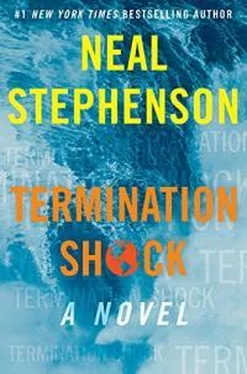
![Нил Стивенсон - Криптономикон [litres]](/books/23868/nil-stivenson-kriptonomikon-litres-thumb.webp)

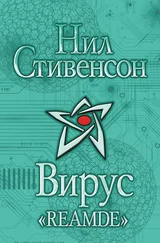


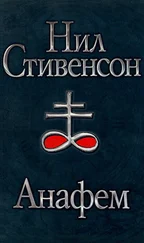
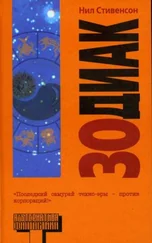
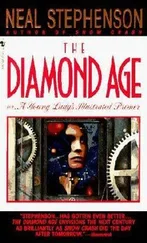
![Нил Стивенсон - Лавина [litres с оптимизированной обложкой]](/books/414066/nil-stivenson-lavina-litres-s-optimizirovannoj-ob-thumb.webp)
